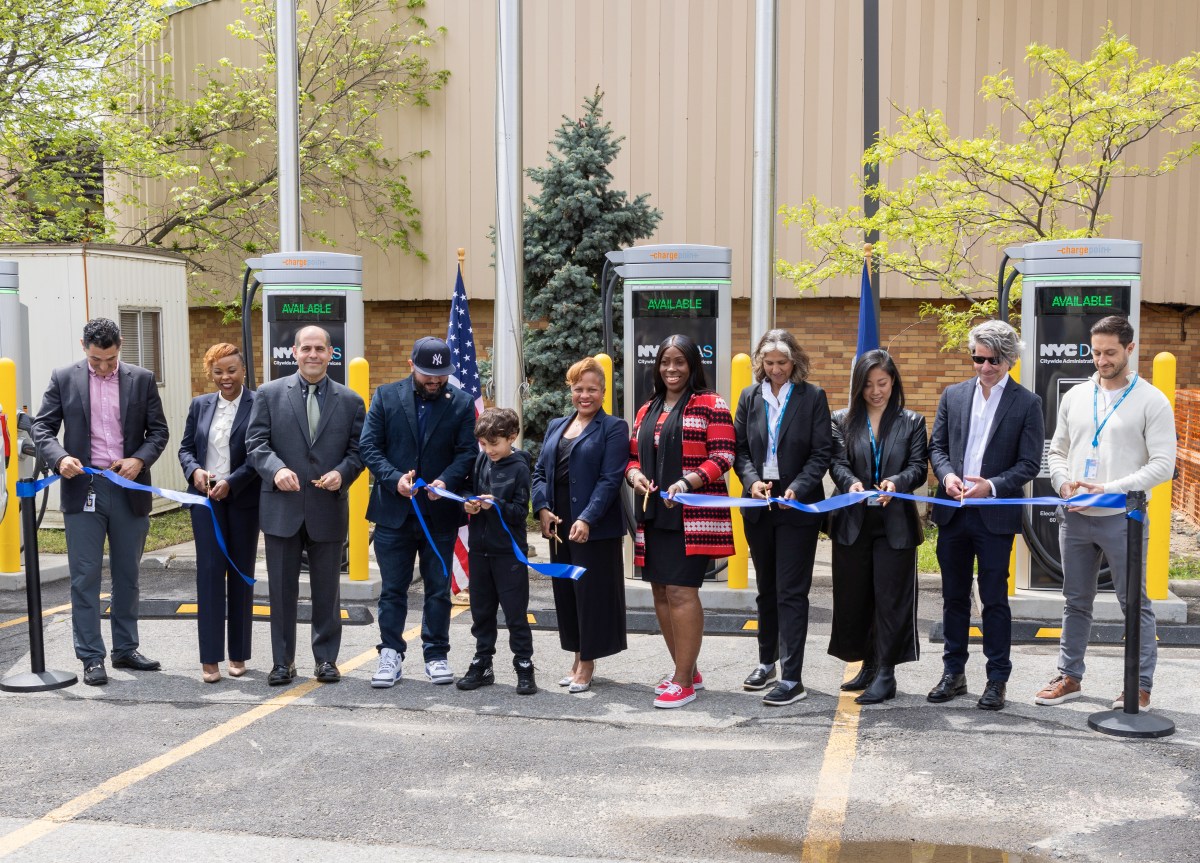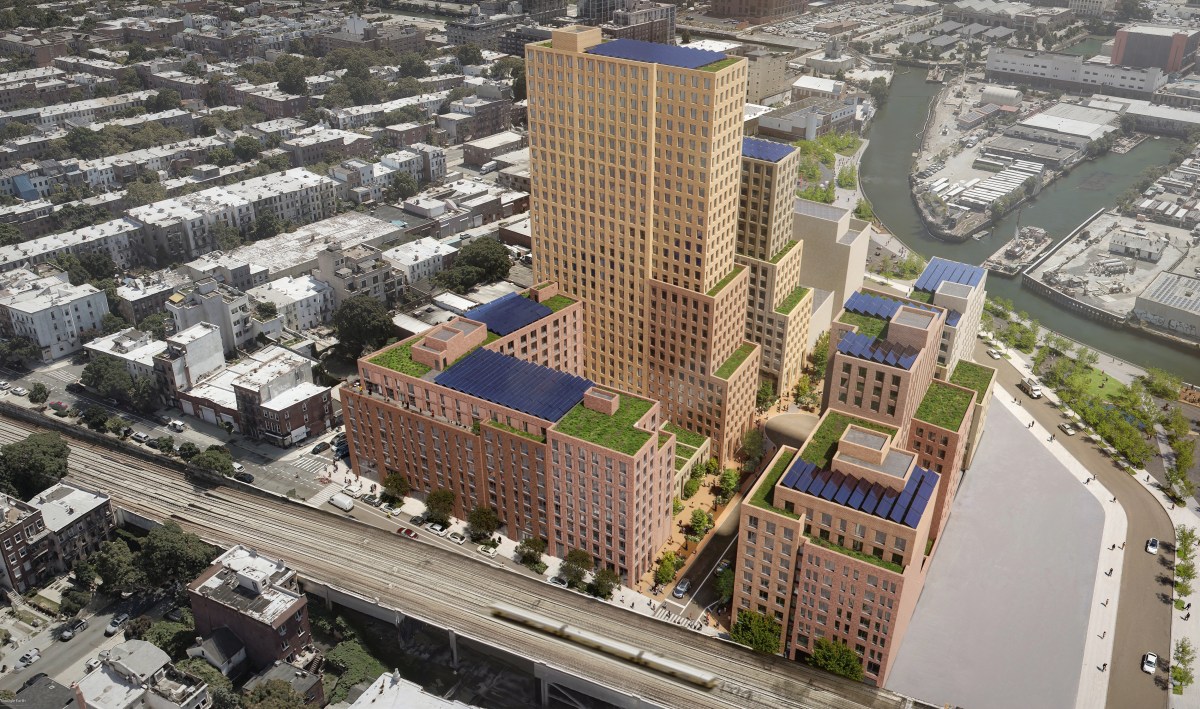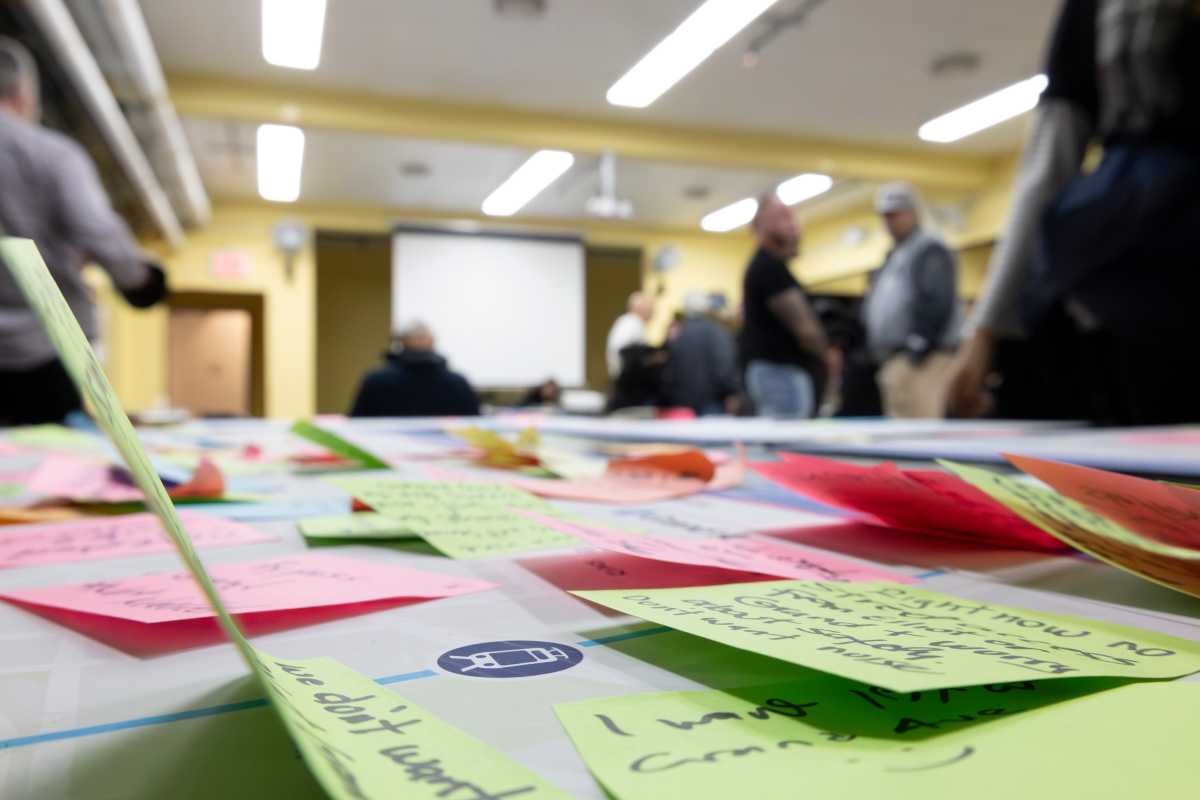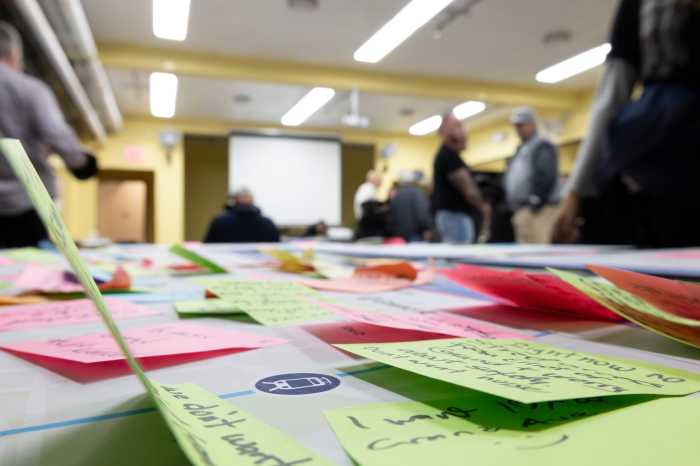On the banks of Brooklyn’s heavily polluted Gowanus Canal, Mayor Eric Adams on Wednesday broke ground on the first of two long-delayed underground sewage overflow tanks, designed to prevent further pollution of the waterway, and a total 3.6 acres of public space that’ll top both tanks.
Together the tanks — costing a combined $1.6 billion — will be able to store up to 12 million gallons of sewage overflow that comes from heavy rainstorms, the mayor said.
“Sewage overflow has long been a problem in the Gowanus area, and especially during heavy rainfalls,” Adams said. “These tanks, and the improved drainage, and pumping infrastructure around it, will keep the Gowanus Canal cleaner and provide more space for recreation and community activities.”
Adams made the announcement along with Department of Environmental Protection Commissioner Rohit Aggarwala and U.S. Environmental Protection Agency (EPA) Region 2 Administrator Lisa Garcia.
The tank Adams broke ground on Wednesday — the larger of the two, dubbed the Head End Tank — will hold up to 8 million gallons of sewage water, with the smaller tank able to store as much as 4 million, he said.

The $329 million Head End Tank will sit at the north end of the Gowanus — surrounded by Nevins, Butler and Degraw Streets — and will run underground nearly two blocks between Butler and Degraw Streets. The project will also include a new “headhouse” building — which will contain the electrical systems, odor control and filters to take debris out of the sewage, as well as 1.6 acres of open space with a waterfront esplanade.
The smaller tank, dubbed Owls Head, will be located in the mid-section of the canal on a triangular peninsula at the intersection of Second Avenue and Sixth Street. It will also include a headhouse and two acres of community space with features like an amphitheater, plazas and an ADA-accessible kayak launch, according to City Hall.
Adams’ office said preparation of the site is on track to be completed before this June, when the EPA is due to finish its dredging up of toxic materials at the canal’s bottom.
In his remarks, Hizzoner reflected on the 1.8-mile canal’s history of serving as a dumping ground for the waste products of industrial sites along its shores for much of its 160-plus-year history.
“In the 1860s the tidal creek was converted into a canal where heavy industry dumped waste and chemicals,” Adams said. “It was a thought that no matter what you placed in our waters, there was just such a vast amount of water around the city that you could never pollute it and it could never destroy the internal structures. That was wrong. And we’re now really having to deal with the sins of the past. It’s now being passed down to the children of today.”

The EPA declared the canal a Superfund site in 2010, but didn’t start its cleanup of the contaminated waterway until 2020, according to a report by Brooklyn Paper. The cleanup process involves scraping 581,000 cubic yards of toxic “black mayonnaise” from the bottom of the Gowanus and capping the canal’s floor to prevent it from being recontaminated.
In order to keep sewage from flowing immediately back into the canal during heavy rainstorms, the EPA ordered the city in 2014 to construct the two overflow tanks, which will store the stormwater and allow it to drain slowly, staving off recontamination of the waterway.
But construction of the two tanks has been delayed multiple times over the past few years, according to Brooklyn Paper. As recently as last year, the city expected to complete construction on the larger tank by 2032 and the smaller one by 2030; that’s three and two years after the EPA said they needed the work to be completed by, and seven and nine years after the agency expected to finish its dredging of the canal this year.
The city ran afoul of the EPA under former Mayor Bill de Blasio for those timelines and revised them under Adams. Christos Tsiamis, the EPA Gowanus Canal project manager, said the administration is now projecting the smaller tank will be completed by 2028, while the larger one will be finished the next year.
Aggarwala, during his remarks on Tuesday, said the Adams administration has been working closely with the EPA to see the work completed on schedule.
“The EPA has worked with us on a monthly basis,” he said. “We’ve had monthly check-ins that Lisa Garcia, the regional administrator, and I have jointly chaired. There’s been lots and lots of staff coordination between that. And it really has been a wonderful example of when government levels choose to work together, we really produce partnership.”
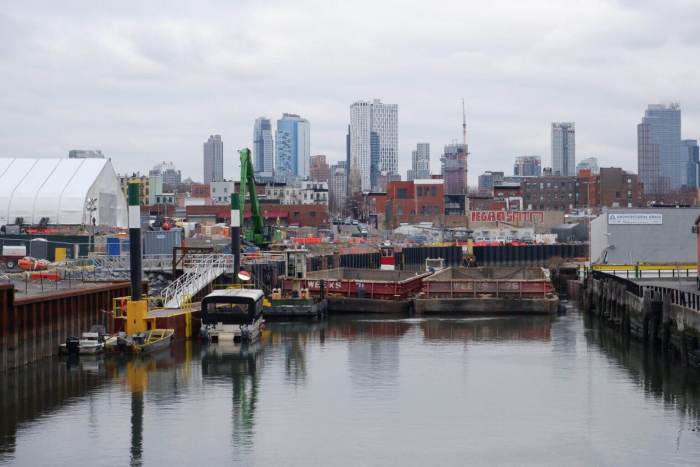
Andrea Parker, executive director of the Gowanus Canal Conservancy, said the public spaces included in the project were added through a hard-fought battle by the Gowanus community.
“The Gowanus neighborhood is severely lacking in parks and greenspace and has long been disconnected from the canal itself,” she said. “The community fought really hard to make sure that planning for the tanks included real commitments to both preserving Thomas Green Park, right there, the one large park that we have, as well as providing more public space in the neighborhood.”
Additional reporting by Kirstyn Brendlen
This story has been updated to reflect the correct dates the tanks are projected to be finished.
Read more: Mayor Adams Urges Incentives for Affordable Housing





